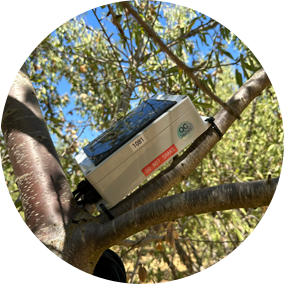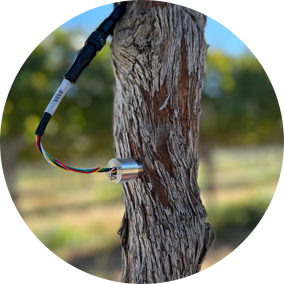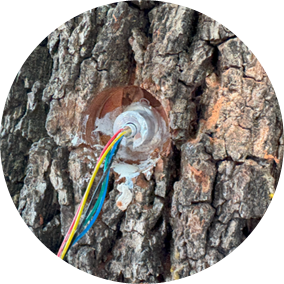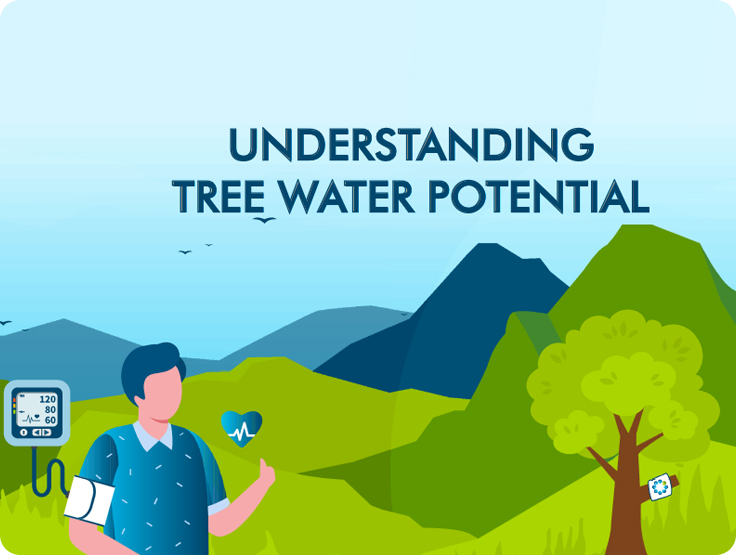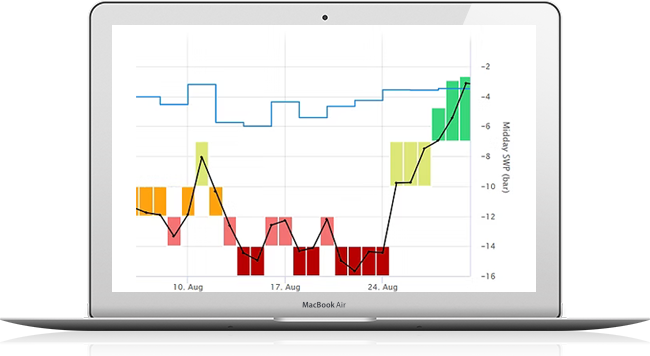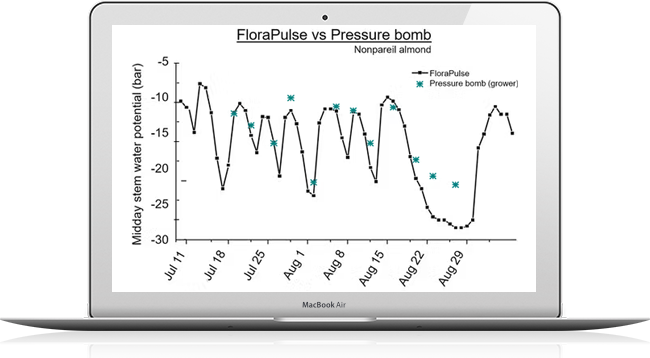About
FloraPulse
Retire the pressure chamber, know exactly when to irrigate, increase crop yield and quality.
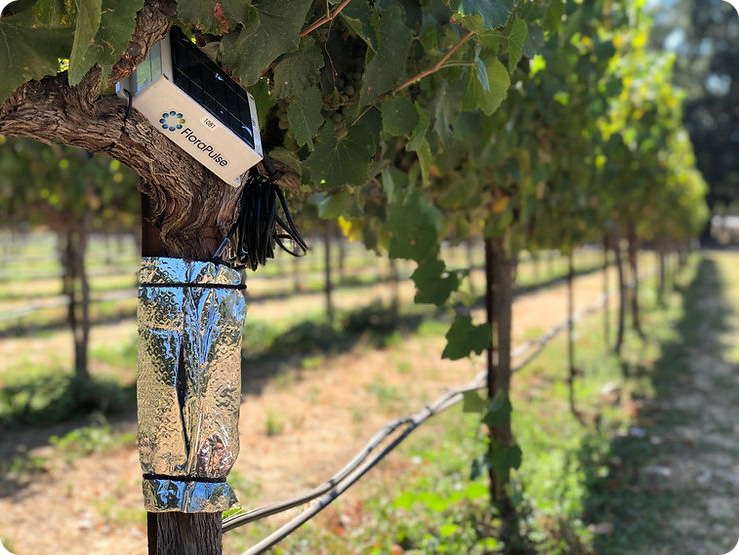
FloraPulse began in the orchards and vineyards of growers.
Since the 1970’s, Alan Lakso, professor of Horticulture at Cornell, had been dragging around the heavy, manual pressure chamber to measure and manage water stress in apple trees and grapevines. Alan was documenting the levels of water stress and their effect on fruit growth and quality. Back then, winegrape growers understood that water stress was important to wine quality, but only had the pressure chamber to measure it.
Why FloraPulse?
What is Anthracnose?
Anthracnose refers to a collection of fungal diseases affecting various plants and trees across the state. These diseases, caused by fungi like Colletotrichum and Apiognomonia, manifest in spots, cankers, and lesions throughout the plant’s canopy. However, their impact varies widely depending on the specific host and environmental conditions.
In California’s diverse climatic zones, anthracnose is especially prevalent during prolonged wet periods in spring. The fungi are notorious for affecting trees such as sycamores, elms, and dogwoods, with symptoms ranging from leaf spots to severe branch dieback. As a seasoned expert in plant irrigation and care, I’ve witnessed the challenges posed by these diseases on both personal and professional levels.
Symptoms and Diagnosis of Anthracnose California
Identifying Anthracnose California involves observing distinct patterns on affected leaves and branches. Generally, small dark spots with defined borders appear on the foliage, which may expand into larger necrotic areas over time. For example, in Chinese elms, the disease manifests as black leaf spots leading to premature defoliation.
Diagnosing anthracnose requires careful inspection of the plant’s canopy and a keen understanding of its typical appearance in specific species. Early-stage infections can often be overlooked, but as the disease progresses, signs like cankers and twig dieback become more apparent. Remember, timely intervention is crucial in minimizing long-term damage.
In my experience with FloraPulse, we’ve learned that monitoring environmental conditions and plant stress levels can significantly aid in early detection and prevention. Real-time data from plant-based sensors offers growers invaluable insights into their crop’s health and helps adopt timely measures against anthracnose.
Effective Strategies for Managing Anthracnose California
Managing Anthracnose California effectively involves a blend of cultural practices and strategic interventions. Here’s a step-by-step approach:
- Choose resistant varieties: Selecting plant species less susceptible to anthracnose is the first line of defense. For instance, cultivars like Bloodgood and Columbia show better resistance against sycamore anthracnose.
- Improve air circulation: Prune nearby vegetation and ensure proper spacing to reduce humidity and dampness around susceptible trees.
- Proper sanitation: Regularly remove and dispose of infected leaves and twigs to prevent overwintering of the fungi.
- Ensure optimal irrigation: Avoid overhead watering that wets leaves. Instead, focus on root zone irrigation techniques.
- Consider fungicidal applications: In severe cases, the application of fungicides might be necessary. Make sure to follow local regulations and guidelines regarding fungicide use.
These steps, backed by years of experience and scientific data from FloraPulse, have proven effective in keeping anthracnose at bay. In one instance, a client in Napa Valley reduced fungal impacts significantly through improved irrigation practices and timely pruning.
What Qualifies as an Anthracnose California Emergency?
An Anthracnose California emergency arises when a tree or plant faces extensive damage that threatens its health and survival. Rapid canopy dieback, widespread leaf drop, and large cankers are signs that immediate action is required.
Immediate interventions might include professional fungicidal treatments and extensive pruning to remove heavily infected areas. These situations necessitate expert consultation to devise an effective management strategy.
As a trusted partner, FloraPulse provides detailed data on plant water stress, enabling timely decision-making and intervention. Our clients have successfully navigated emergencies by leveraging precise irrigation and care recommendations from our system.
Overlooked Aspects of Anthracnose California
While symptoms and treatments of anthracnose are often discussed, certain aspects frequently go unnoticed. One such factor is the role of microclimates. Areas with specific temperature and humidity variations can exacerbate anthracnose, requiring tailored solutions.
Additionally, the impact of climate change is altering the disease dynamics, leading to new challenges. Warming temperatures can extend the active period of these fungal pathogens, making traditional management techniques less effective.
At FloraPulse, we continually adapt our practices and technology to align with these evolving conditions. By harnessing cutting-edge plant sensor data, we are not just reacting to current issues but proactively designing strategies to mitigate future risks.
- Microclimate influence
- Climate change impacts
- Proactive risk mitigation
Personal Insights on Managing Anthracnose California
Having worked with diverse growers across California, I’ve seen firsthand the struggles and triumphs faced in dealing with Anthracnose California. One particular case involved a sycamore-laden landscape in San Francisco where innovative pruning and sensor-based irrigation turned the tide against repeated infections.
From small-scale gardens to expansive orchards, the lessons learned are invaluable. Collaboration with fellow experts, continual learning, and leveraging technology have been central to success. Moreover, fostering a deeper connection with nature and understanding its subtle signals makes the battle against anthracnose more meaningful and effective.
Ultimately, the solutions extend beyond scientific data and into the realm of passion and dedication to plant health and sustainability. FloraPulse embodies this ethos by providing growers with the tools and knowledge they need to thrive.
What causes Anthracnose California, and how does it spread?
Anthracnose California is primarily caused by fungal pathogens like Colletotrichum and Apiognomonia. These fungi thrive in moist, humid conditions, which makes them particularly problematic during prolonged wet periods in California’s diverse climatic zones. They spread through spores that are carried by wind, rain, or human activity. An interesting scenario is how sycamore trees in urban areas can act as hotbeds for anthracnose, with spores spreading rapidly due to the close proximity of trees and increased human movement. Understanding this spread mechanism highlights the importance of regular monitoring and strategic interventions to prevent widespread outbreaks.
How can I identify Anthracnose California on my trees and plants?
Identifying this disease requires a keen eye for certain symptoms, such as small dark spots with defined borders on leaves, which can expand into larger necrotic areas. For instance, in Chinese elms, you might notice black leaf spots that lead to premature leaf drop. Early detection is crucial, and here at FloraPulse, we’ve found that using real-time data from plant-based sensors can significantly aid in early detection. This proactive monitoring allows for timely intervention, potentially saving your plants from severe damage. It’s always better to catch these symptoms early than to play catch-up later.
What emergency measures should I take if my trees are severely affected by Anthracnose California?
If your trees show signs of severe damage, such as rapid canopy dieback or large cankers, it might be time for emergency measures. Immediate steps include extensive pruning to remove infected areas and potentially professional fungicidal treatments. It’s also wise to consult experts who can provide targeted strategies. At FloraPulse, we’ve assisted clients through emergencies by supplying detailed plant water stress data, which informs precise irrigation and care strategies. Consider what immediate actions you can take now to prevent the disease from spreading further.
What misconceptions exist about Anthracnose California management?
A common misconception is that once a tree is infected with anthracnose, there’s little that can be done. In reality, there are effective management strategies that can significantly reduce the impact of this disease. These include cultural practices like improving air circulation, choosing resistant plant varieties, and employing proper irrigation techniques. At FloraPulse, we emphasize the importance of using accurate data to guide these practices. Reflect on any misconceptions you might have about tree diseases, and consider how a data-driven approach could change your current management plan.
What role does climate change play in Anthracnose California dynamics?
Climate change is a significant factor, altering the disease dynamics of Anthracnose California. With warming temperatures, these fungal pathogens have an extended active period, challenging traditional management techniques. We’ve observed that specific microclimates can exacerbate the disease, necessitating tailored solutions. At FloraPulse, we adapt our practices to align with these evolving conditions, utilizing cutting-edge plant sensor data. How do you think climate change is affecting your local plant diseases, and what proactive steps could you take to mitigate these impacts?
How can FloraPulse help in managing Anthracnose California effectively?
FloraPulse is revolutionizing how we manage plant diseases like Anthracnose California by providing precise irrigation guidance through plant-based sensors. These sensors offer real-time data that help identify water stress levels and environmental conditions favorable to fungal growth. Our system enables growers to make informed decisions, ensuring optimal irrigation and reducing the risk of disease onset. By leveraging our technology, you can effectively manage anthracnose, enhancing both the yield and quality of your crops. Have you explored how data-driven insights could refine your current approach to plant care and disease management?
What are effective strategies to prevent Anthracnose California?
Prevention is always better than cure when it comes to plant diseases. Effective strategies for preventing Anthracnose California include choosing resistant plant varieties, ensuring proper spacing and air circulation, and engaging in regular sanitation by removing infected plant debris. Also, focus on optimal irrigation; avoid overhead watering to reduce leaf wetness, which favors fungal growth. Consider using fungicides as a last resort, adhering to local guidelines. With FloraPulse’s data, we support growers in implementing these practices accurately, reducing the onset of such diseases. What preventive measures could you start today to mitigate disease risks in your garden or orchard?
How It Works
How It Works
The FloraPulse system is a microchip tensiometer (microtensiometer) that is embedded into the tree woody tissue and directly measures the water status, known as water potential. Because the measurement is taken directly inside the water-carrying tissue, readings are very accurate and reliable. You receive daily midday stem water potential readings, along with science-backed irrigation recommendations.
Weekly Reports
Receive weekly reports on your crop’s water-stress history, color-coded by stress level. Use clear, detailed data to adjust your irrigation and get that perfect vintage, that perfect yield. Every year.
Scientific Validation
The sensor data has been validated against the Scholander chamber with good correlation in prune, almond, winegrape (and others).
Technology Backers
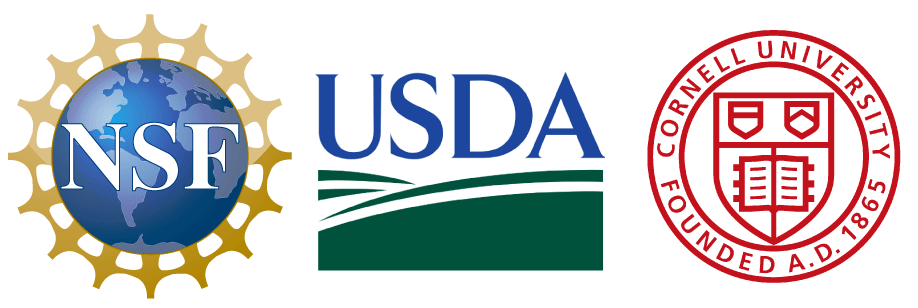
Our technology has been funded by the NSF and USDA, and was originally developed at Cornell University.
What is FloraPulse?
The most accurate way to irrigate.
Customer Testimonials
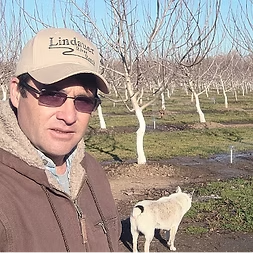

“We were extremely happy with the FloraPulse system we tested in our prune orchard this year. We found that the FloraPulse readings correlated very well with our pressure bomb readings…
Michael Vasey
Lindauer River Ranch
Red Bluff, California
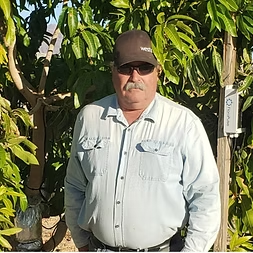

“I am very happy with the FloraPulse unit. I grow a rare mango crop, in a desert environment with extremely high summer temperatures, in alluvium soil that has very limited…
Rod Chamberlain
Wong Farms
Mecca, California


